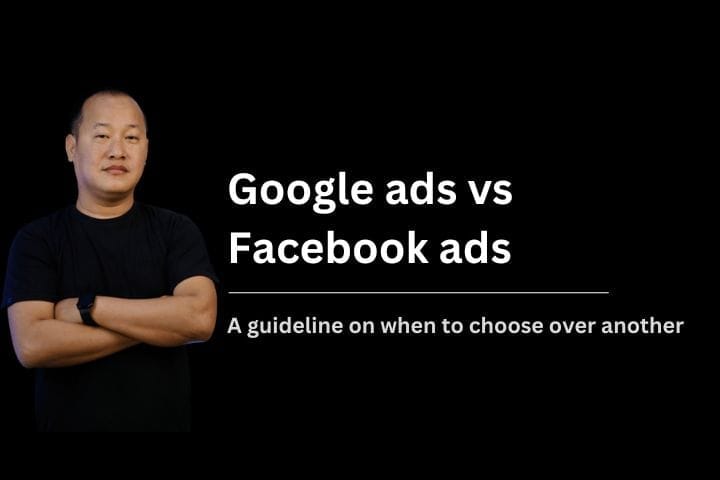Inbound Marketing – A comprehensive guide to grow your business
Are you looking for ways to boost your sales without pushing your goods or services onto prospects in the hope of generating leads? Are you unsure why you cannot convert an opportunity into a customer, even when you’re spending more and more time, money, and effort on the traditional way of marketing? If the answer is “YES,” you must change your traditional marketing methodologies and switch to Inbound marketing for desirable results.
If you’re new to the topic and looking for what inbound marketing? Or, have you heard about inbound marketing and wondered, ‘Will this actually help me generate more leads, and how?’ Then brace yourself to learn and implement what this comprehensive guide offers you.
Walk through this article to find out what is inbound marketing, its methodologies, and how to use it to grow and promote your business.
However, before we go any further about Inbound Marketing and how it can boost your sales to grow your business. You first need to understand that the technological shift has changed how business works today. Every business is going on the world stage with the internet. It is like a leap from the store to prospects directly. This has changed almost everything from business principles and buyer behavior to marketing methodologies and customer service.
Your business cannot survive in this ruthless age of digital marketing if you cannot understand your business fundamentals and buyer’s behavior. Buyers today have incredible access to information and can reach quick, conscious, and rational conclusions. The way consumers use free tools to avoid marketing calls and emails has made many businesses disappear. The efficiency of the internet has empowered them, which has made a considerable shift in how businesses work and provide services.
These days consumers can easily access any information regarding products and prices. They browse articles, monitor referrals, survey ranks and reviews, analyze prices and anticipate solutions when they want and where they want. The market has more and more service providers than ever before.
So, you’ll need to have a primary knowledge of how people make decisions while selecting a product or service out of all the choices accessible in the market.
And here’s where Inbound marketing kicks in.
Inbound marketing helps businesses to adapt to the fast-changing needs of individuals with the entire customer experience tailored to them.
So what is Inbound marketing?
Inbound marketing is a marketing strategy that draws visitors and potential customers by creating valuable content, and information, to provide them with actionable solutions. It is about addressing their problems through different digital platforms and delighting with convenient solutions.
In the age of digital marketing, inbound marketing is the most effective way to promote your business and convert individuals into a prospect. Inbound marketing is a strategy that attracts qualified candidates via valuable content, blogs, and how-to approaches and delivers solutions to their problems and needs.
It generally means attracting the attention of prospects by creating and sharing content before they are even ready to buy from you. It is the best and most cost-efficient way to amuse individuals or businesses with solutions and your expertise to produce a positive impact for you both. Furthermore, it can be said that inbound marketing is a kind of marketing that consumers do not hate at all.
Differences between outbound and inbound marketing
Outbound marketing typically means traditional marketing where you run TV and radio ads, buy email lists, cold call or do email marketing, and advertising on billboards or magazines and newspapers.
While on the other hand, inbound marketing means helping potential customers with their problems and providing relevant information by creating and sharing content to attract those seeking answers.
Outbound marketing is to sell your product by interrupting their daily lives, while inbound marketing is built upon the principle of guiding your potential customers by buying their attention with relevant information.
And initially, talking about which marketing lasts longer and adds value, inbound marketing beats outbound marketing as the content you create and share for inbound marketing remains forever in search engines and will generate traffic and leads in upcoming days too.
On the contrary, outbound marketing only lasts as long as you pay for email lists and running ads.
To clarify this, let’s see a few examples of outbound marketing and Inbound marketing.
Outbound Marketing
Telemarketing
Cold-calling
Email marketing
Sales Flyers
Tv Ads
Inbound Marketing
Social Media Marketing
Blog posts
Podcasts
Ebooks
Educational Videos
How-to contents
SEO
Now that you are more clear about what inbound marketing is, learn these three proven methodologies of inbound marketing to grow your business.
Three significant steps to this inbound methodology.
Attract
As the essence of inbound marketing revolves around attracting individuals by providing actionable solutions and expertise to help them sort out their problems, you need to understand what issues your buyers run into.
For example, if you’re a software designing company, your most relevant customers are the businesses who are looking to build up a website for themselves or someone running into problems with their sites.
So you’d probably be creating content regarding the whys and hows of building sites and approachable solutions to website issues.
You want to attract individuals and businesses who are more likely looking to create a website and website-related problems that can become a lead.
You must be able to understand what kind of people are looking for your content so that you can attract more of the right customers and not just everybody.
And after you understand the kind of people looking for services you can provide, use content strategy tools and rank for the topics that matter the most to your prospect.
Create content, blog posts, or video tutorials and publish them using social media tools. Create ads and relevant content to build awareness about your services with your targeted audiences. Be aware of what’s working and what’s not, and improve on those points.
Some tools to attract your audiences are making Ads, videos, and blog posts and sharing them across social media and digital platforms.
Engage
After you’ve successfully attracted individuals or businesses towards your content, the goal is to engage them through chatbots, messaging apps, or live chats. The articles or video content may not always provide all the information your leads seek. Because you can know what and where your prospects are looking at your web page, you can use these chatbots and messaging apps to help them with their struggles.
You can help, assist, and recommend them in real-time by providing contextual and appropriate responses and support through these services. This will always add value to your customers and helps to build trust.
And even if you cannot help them right away, you can always use their information to produce premium content and notify them through any channels they are active at.
Use quotes to present your infographics, webinars, and deals to support them. Engaging your customers, and guiding them, even if they are not buying anything from you, can help you create brand loyalty and get referrals.
Delight
Delight is the stage of inbound marketing that provides your customers with exceptional expertise and customer service. Understand that; it is the part that also allows you to convert your customers into promoters for your business.
Allocate information and create a database that motivates your customers to choose you and your services over others and tailor your content to offer your expertise and solve their future needs or issues they might run into.
This will help you to create premium content for their problems and solutions that your prospects can share within their social network.
Your happy customers can influence their network to use your services, providing you with more prospects.
Survey for their feedback or have a series of phone calls to respond to each inbound inquiry.
Use email and marketing automation with the people you do business aligning with your sales and service team and providing additional information and insights through conversations and interactions.
For each part of your team, from marketing to sales and services, practice these inbound methodologies to attract, engage, and delight in achieving sustainable growth.
Prospects don’t want to be sold out but rather be educated and informed to help them make smart decisions and grow. Learn these fundamentals and principles of inbound methodologies to implement them and effectively turn your prospects into happy customers.
Fundamentals of inbound marketing
1. Company Purpose
Inbound marketing is adding value to help your customer. And to help them, you need to understand what your company is established for.
Without your company’s purpose, you can not be able to guide, inform, and help anyone.
Make a clear mindset of why your company was founded and what it will serve. Draw a clearly identified mission or vision of how you will help your customers or businesses.
Identifying your purpose and why your company was founded will help your sales and marketing team to remain related to your core values and better understand their roles to help the company grow.
2. Business Goals
After you determine what and why your company was founded, think about the goals you want to achieve.
You must outline your company goals and have a defined framework for your marketing, sales, and service team. Their checklist and journey should all align with the company’s framework to achieve the same goal.
Ensure that all the people within your company, from executives to individual contributors, spend their time and effort working towards the same goal.
3. Buyers persona
Everything will fall apart if you don’t know who you’re trying to attract, engage, and delight. And that’s where the buyer’s persona kicks in. You can say that it is the modern way of learning about your target audience.
Buyers’ personas are semi-fictional characters that you create from your ideal customers based on market research and gathering data about your existing customers and their motivations, behaviors, and goals.
A buyer persona helps you to determine where to focus and better understand the issues to implement more relevant content by learning the buyer’s mindset and motivation leading to the decision stage.
4. Buyers Journey
From the awareness of your content and services until the decision stage of your buyer’s persona, you should be able to create a buyer’s journey. Gathering all the information and interactions they had with your company through these stages will help you to draw a precise conclusion and guide them further.
From where they saw your content until they decide to go with you, create a conceptual map about where they are positioned. It will be useful in many ways for all your teams. You can use the buyer’s journey to tailor and create content at every stage, help them offer the needed solutions, and better understand the buyers’ perspective to guide them through each stage.
When implemented correctly, these inbound methodologies can help you grow your business with the correct fundamentals.
To set these fundamentals, a few inbound principles need to be practiced.
How these inbound methodologies work
1. Standardized Consistency
Simply put, standard consistency is the surety of having the same information, values, and understandings towards the company’s product, information, services, and audiences throughout your team.
This is one of the major parts where you can build trust. You and your team must be able to provide the same sort of information or answers regarding their queries. In other words, the entire team should be able to identify the ideal customer in the market.
For example, If you have a dental website running and someone calls at the desk and tries to gather the same information with different people from your company, they must be able to answer with the same information. This helps your customers build trust in your brand.
2. Personalize the result
Once you’re done standardizing your brand’s voice, your next step should be personalizing for impact.
With the database and information you acquire about your prospects, tailor and use those pieces of information to message or talk directly with your prospects.
Gather and store the information you have about your prospect. This helps you have access to old or previous conversations and queries and can prevent repetitive discourses or canned information that are irrelevant at that time.
3. Optimize for clarity
Use all the information and previous interactions with your brand to contextualize for relevant information. Be aware of the problems or answers that are no longer needed, and optimize your data and information with clarity.
It is the best way to understand clearly what kind of sales and marketing strategy you can use across each conversation section.
4. Empathize for perspective
The inbound methodology is about providing your customers with valid and relevant information that can guide them through an issue. So, you need to understand your customer’s perspective and make them feel that you are providing them with relevant information and needed guidance.
Inbound is a process of drawing, involving, and pleasing people to develop a market that contributes value and creates trust. It nurtures your leads to turn into happy customers. The procedures used for marketing across the times have altered drastically. Building relationships and satisfying your customers is one of the premier components for your business to grow.
Conclusion
With those fundamentals and principles in mind, build a road map for your own business, and implement them. These proven inbound methodologies will help you identify and attract potential customers, engage them with valuable content, and guide them to make decisions that will delight them and grow your business.
The inbound approach to doing business is customer-centered as the market is evolving. Inbound marketing guides you through identifying your purpose, buyer persona, journey, and buying behaviors to enrich your company with better and more relevant content and services.
Lastly, if you are an outbound business using traditional marketing that shouts and advertises your product and services. It won’t help you grow in this world of inbound business. Understand that the market has changed, and you must also change your marketing strategies.
Outbound marketing won’t help attract attention but irritates the audience. A market survey by the inbound company found that 94% of consumers disrupt communication with a company because of irrelevant information and messages.
On the flip side, companies practicing inbound are successfully attracting individuals and businesses, converting them into customers, and growing their business.
Inbound marketing helps you draw customers towards you via interactions and content that are relevant and helpful.
Like all the aspects of marketing, sales and customer service have changed radically. You must consider changing your techniques, strategies, and methodologies too.
To hope that getting out in the market and shouting out your products or using cold calling and email marketing will bring clients to your business is a false hope.
To sum up, switch to inbound marketing and use these inbound methodologies and create valuable content that is specific, actionable, and can be used to solve a problem or at the least give your readers the information about what they are looking for.






